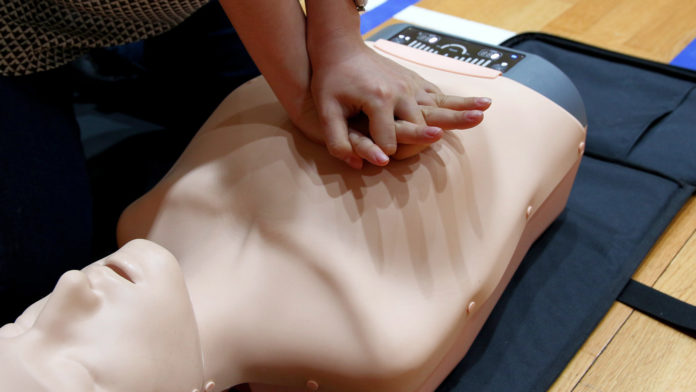When someone’s breathing or heartbeat stops, cardiopulmonary resuscitation (CPR) is a first aid technique that can keep that person alive. Hard and fast compressions to the midline of the chest push down on the heart to keep blood circulating to the brain and other organs.
But there might be an even more effective location for delivering chest compressions.
Paramedic Rory Marshall investigated this question as a graduate student at the University of Saskatchewan.
“As a paramedic, resuscitation is very personal to me,” said Marshall in a press release.
“From delivering CPR, I have firsthand experience in the impact high-quality CPR can make in a patient’s outcome. Even small improvements in how we do CPR gives patients the best chance at survival.”
Marshall worked with researchers at the Western College of Medicine to test whether delivering compressions to locations other than the midline might help transfer more force to the heart instead of to the chest. That could help deliver more oxygen to the brain during a cardiac emergency, which is critical to patient survival and recovery.
The heart is positioned asymmetrically in the chest cavity. The chamber that pumps blood to the body and brain is called the left ventricle, and (except in very rare cases) it’s located towards the patient’s left. Using ultrasound, Marshall measured blood flow to the brain when performing chest compressions in different locations. Delivered over the heart’s left ventricle instead of to the midline, CPR resulted in greater blood flow to the brain.
The next step for Marshall is to take this approach to human clinical trials to confirm whether left ventricle chest compressions provide a neurological benefit for patients who need CPR.
Despite the potential benefits, there are also potential drawbacks. During an emergency, CPR is often left to untrained people under guidance from a 911 operator, simply because they are nearby. Trying to locate the right place to deliver left ventricle chest compressions isn’t as straightforward as going to the midline, where the sternum is an easy bony landmark to find quickly. But for healthcare workers, first responders, and other people specifically trained in first aid, this could prove to be a better approach.
When a heart stops, there are only minutes available to restore blood flow to the brain to maintain any hope of survival. Implementing a more effective CPR technique could benefit people all over the world without requiring any special tools, and it’s the type of innovation that would both save lives and preserve quality of life for patients.








































